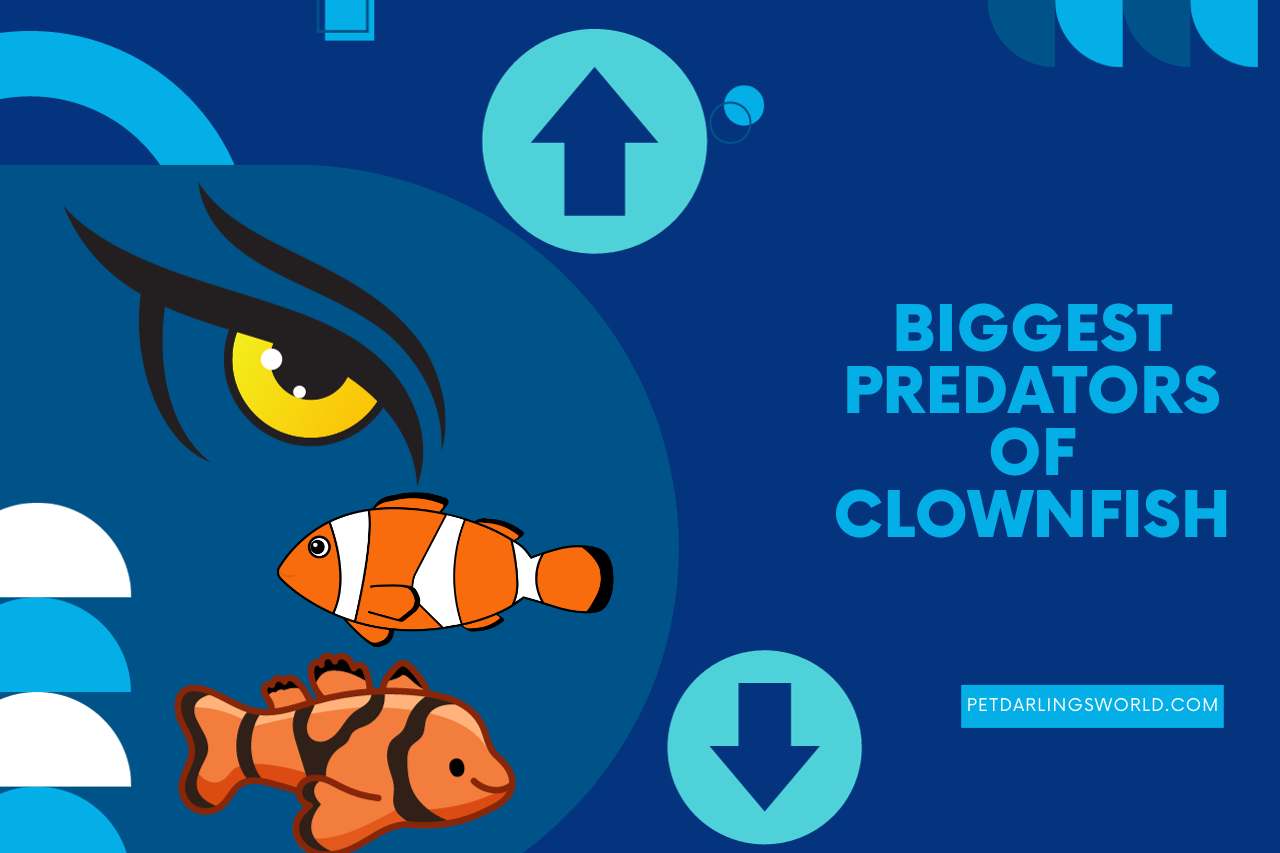How do clownfish protect themselves from predators? Clownfish, those charming denizens of the sea, have evolved remarkable strategies for survival in the underwater world. From their iconic partnership with sea anemones to their clever camouflage and territorial behaviors, they are experts at self-preservation. In this guide, we’ll dive into the intriguing world of clownfish defense mechanisms, unraveling the secrets behind their safety and success.
Does the Clownfish have Any Predators?
Yes, clownfish have natural predators, despite their protective relationship with sea anemones. Common predators include larger fish, sea birds, and even some marine invertebrates.
Exploring clownfish predators:
- Larger Fish: Predatory species like groupers and lionfish see clownfish as potential prey, especially when outside the protective embrace of sea anemones.
- Sea Birds: Some seabirds, such as herons and egrets, feed on clownfish in shallow waters.
- Marine Invertebrates: Certain invertebrates, like sea stars and mantis shrimp, pose a threat to clownfish, particularly the smaller ones.
Despite these predators, the clownfish’s unique symbiotic relationship with sea anemones provides them with a valuable defense mechanism, deterring most would-be attackers.

Biggest Predators of Clownfish
The biggest predators of clownfish include larger predatory fish like groupers and lionfish. These predators see clownfish as potential prey, particularly when they venture away from the protective embrace of their sea anemone homes.
A closer look at the main predators of clownfish:
- Groupers: Large groupers are among the top predators of clownfish in the ocean. They have the size and speed to capture clownfish that stray too far from their anemones.
- Lionfish: The invasive lionfish is another significant threat. Their voracious appetite for smaller fish, including clownfish, poses a danger in many reef ecosystems.
- Triggerfish: Some species of triggerfish are known to prey on clownfish, especially the smaller individuals. They use their powerful jaws to crush the protective mucus layer of clownfish.
While these are some of the biggest natural predators of clownfish, the unique relationship between clownfish and sea anemones provides a crucial defense mechanism, offering protection against many potential threats.
How Do Clownfish Protect Themselves from Predators?
Clownfish employ several clever strategies to protect themselves from predators:
- Symbiotic Relationship with Sea Anemones: Clownfish form a unique alliance with sea anemones. They are immune to the stinging tentacles, taking refuge within them, while providing food scraps in return.
- Territorial Behavior: Clownfish are fiercely territorial, deterring potential threats. They defend their anemone homes, ensuring a safe zone.
- Mucus Layer: Clownfish have a protective mucus layer. This layer helps deter predators and reduces the impact of stings from anemones.
- Camouflage: Some clownfish species can change colors, blending with their host anemones or surroundings, making them less visible to predators.
- Speed and Agility: When necessary, clownfish display remarkable speed and agility, darting into the protective anemone tentacles.
- Alarms and Distractions: Clownfish emit sounds and visual signals to alert others in their group to danger, creating confusion and aiding their escape.
These combined strategies help clownfish coexist with their potential predators, making them a remarkable example of survival in the underwater world
What you Can Do to Protect your Clownfish from Predators?
- Provide Suitable Tank Mates: Choose compatible tank mates that won’t harm or harass your clownfish. Research their behaviors and preferences.
- Sea Anemone Substitutes: If keeping clownfish, consider providing artificial sea anemone substitutes. This can offer them protection and comfort.
- Proper Tank Size: A spacious tank with hiding spots helps reduce stress and provides escape options.
- Tank Placement: Keep the tank in a quiet area to reduce stress and disturbances.
- Monitor and Quarantine: Regularly observe your fish for signs of aggression or illness. Quarantine new fish to prevent diseases from entering the tank.
- Balanced Diet: Feed a varied and balanced diet to keep your clownfish healthy and resilient.
By following these steps, you can create a safe and thriving environment for your clownfish, protecting them from potential predators
Watch this one,
Video Credits – Lammas Science
You May Also Like
- Does Clownfish Live In Freshwater? Exploring Clownfish Biomes!
- Can Clownfish Be Kept Together? Tips For Keeping Them Together!
- How Often To Feed Clownfish? Keeping Clownfish Happy
- Are Clownfish Territorial? Debunking Territorial Myths!
- How Often Should I Feed My Clownfish? Maintaining A Healthy Diet!
- Do Clownfish Eat Their Own Eggs? Unraveling The Mystery!
- How Big Do Clownfish Grow? (Size Guide And Care Tips)
- Exploring The Relationship Between Blue Tangs And Clownfish
- How to Pair Clownfish? Proven Methods and Tips!

Wonderful web site Lots of useful info here Im sending it to a few friends ans additionally sharing in delicious And obviously thanks to your effort
Just wish to say your article is as surprising The clearness in your post is just cool and i could assume youre an expert on this subject Fine with your permission allow me to grab your RSS feed to keep updated with forthcoming post Thanks a million and please keep up the enjoyable work
Normally I do not read article on blogs, however I would like to say that this write-up very forced me to try and do so! Your writing style has been amazed me. Thanks, quite great post.